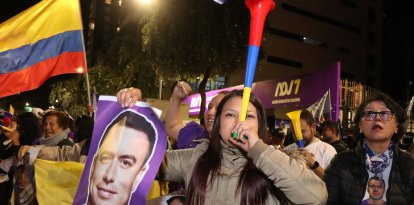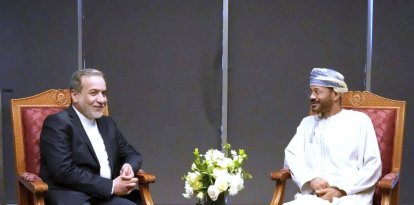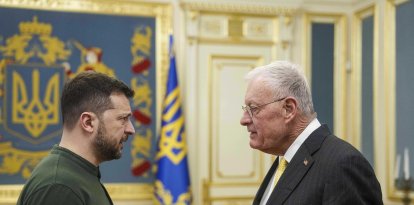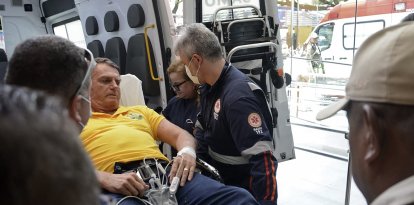The false myth that Israel is “murdering” journalists in Gaza is debunked
The Western press is replicating a list of propaganda that comes directly from Hamas.

Palestinos realizan un funeral para un supuesto periodista
The media around the world, especially in the West, is responding in unison to a complaint supposedly coming from the Committee to Protect Journalists (CPJ): Israel, in the last four months, was the “killer” of close to one hundred journalists in Gaza during its crusade against Hamas after the terrorist attacks on October 7.
According to a report by CPJ, a New York-based NGO, 2023 was the bloodiest year for journalism, with 99 deaths, and the majority came from the war between Israel and Hamas.
The committee reported in December that more journalists were killed in the first three months of the war between Israel and Hamas in Gaza than in any other country during the entire year. At that time, the number of journalists killed was 77 (it currently stands at 88), and almost all of them were Palestinians, CPJ reported.
However, the figures, in the best of cases, have been manipulated by Hamas. At worst, they are entirely false, explained investigative journalist David Collier, who denounced that most of the Palestinian “journalists” murdered, in reality, were part of or linked to terrorist groups such as Palestinian Islamic Jihad or even Hamas.
According to Collier, in fact, CPJ’s list of journalists is based on a single source: the Hamas-controlled Gaza Media Office.
The UK-based investigative journalist published a 200-page report titled “The Journalists of Gaza: A Modern-Day Antisemitic Conspiracy Theory Promoted by Mainstream Media” and wrote, “that the claim Israel has been targeting journalists to silence them is an unsupportable and disgraceful fiction.”
When Collier made his report, CPJ had reported the deaths of 70 journalists, a number that has been increasing.
In his report, Collier denounces that CPJ did a mediocre investigative job, accepting the Hamas list as correct and distributing it worldwide without independently verifying the biography of the names mentioned by the Gaza Media Office.
In an interview with Jewish News Syndicate (JNS), Collier denounced that the CPJ practically covered up Hamas propaganda worldwide, creating a fictional narrative that Israeli forces are hunting journalists in Gaza to prevent the IDF’s alleged military excesses from being reported, a narrative pushed by the Palestinian Union of Journalists.
“We know we’re dealing with Hamas propaganda when we’re talking about the Hamas list, and there’s little point addressing it. The issue that we have is when Western NGOs run with what is effectively watered-down Hamas propaganda, which is what the CPJ is doing,” Collier told JNS.

Israel is not killing journalists in Gaza
According to Collier, all the names on the CPJ list come from the original list controlled by Hamas. The discrepancy in the figures is relatively low; CPJ said, at that moment, that 88 journalists have been killed since the war broke out, while Hamas reports 107 deaths.
The journalist claimed that CPJ did minimal cleaning of the original list, removing individuals who were clearly terrorist agents and not journalists. However, many on CPJ’s list could hardly be considered legitimate communicators.
For example, from CPJ’s list, Collier found that 35 of the 70 names mentioned, in addition to being “communicators,” worked for outlawed terrorist groups.
“I mean, you could argue that they are journalists. But they work for Hamas and Palestinian Islamic Jihad,” Collier said.
Likewise, about 19 (27%) were not journalists at all.
In his report, Collier states that 79% of those mentioned on the list supported terrorism and also glorified the October 7 massacre.
For example, he mentioned the case of Hassuna Salim, an alleged Palestinian journalist who worked for Quds News Network, affiliated with Hamas, who posted on a Telegram channel on October 7 an order from Islamic Jihad to take up arms and fight, encouraging civilians to participate in the slaughter against Israelis.
He also cited the case of Duaa Sharaf, who worked for Radio Al-Aqsa, a Hamas-affiliated broadcaster, who posted on social media on April 7, 2022, after a mass shooting in Tel Aviv, a message of hate against Israelis: “Kill them. May Allah punish them with your hands, and humiliate them, and help you against them, and heal the hearts of a believing nation.”
Another so-called journalist, Jamal Mohamed Haniyeh, is the grandson of Ismail Haniyeh, the political leader of Hamas.
According to Collier, CPJ’s work was “sloppy” and “amateur,” arguing that all of this information is public and easily accessible.
“Why the hell didn’t they do that work? How could they not bother to check anybody on social media?” Collier told JNS, who also made a vital point: most of the journalists on the list were killed at home and not while on duty—suggesting that their deaths were part of special operations against terrorism.
Collier recalls the case of Ahmed Shebab, who worked for the Islamic Jihad’s Radio Voice of the Prisoners.
The journalist points out that Ahmed Shebab died at the home of a relative who was a leader of the Islamic Jihad.
“Islamic Jihad came out with a notice after the assassination, after the targeted killing, saying we’ve lost our great leader. So [Ahmed] is in the house of an Islamic Jihad leader. He’s not out there in the field. He’s been killed not because of his journalism at all but because he’s directly related to an Islamic Jihad leader. This was easily accessible information,” Collier said.
CPJ defends itself
Meanwhile, the NGO that denounces Israel defended its list of murdered journalists, explaining that, for the moment, they have not found information linking the individuals to terrorist groups.
“CPJ does not support journalists engaged in breaking the law. In the cases we have documented, multiple sources have found no evidence to date that these journalists were engaged in militant activity,” the committee said in a statement sent to JNS.
However, Collier points out that the organization is washing its hands, ignoring easily verifiable information and manipulating the context of a widely disseminated statistic.
In fact, according to the journalist, the actual number of dead journalists is around fifteen, and CPJ included dozens of individuals who should not have been part of the list.
“In short, the CPJ numbers are grossly exaggerated; they’ve included dozens of people they should not have done, and by promoting these fictions, CPJ are helping to spread raw Hamas propaganda into the mainstream,” Collier said.
Journalists in Gaza are not military targets
Another point ignored in CPJ reporting is that when journalists die covering a war, it doesn’t necessarily mean they are being targeted, Alex Safian of CAMERA (Committee for Accuracy in Middle East Reporting in America) told JNS.
“When journalists get killed covering a war, it doesn’t mean that those journalists were targeted personally or as journalists, which is why Western media should not accept at face value Hamas claims that Israel has intentionally killed Gaza journalists,” Safian said.
RECOMMENDATION





















